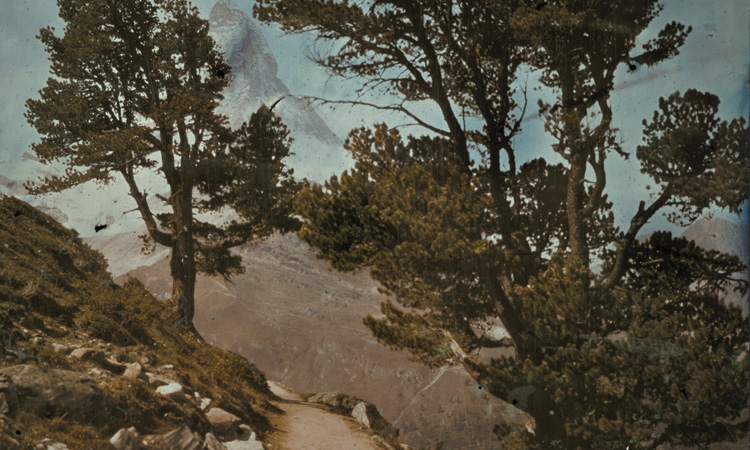Light Touch
Lippmann's Unfading Photographs
A technique leverages interference to create vibrant, stable color pictures—but never hit the mainstream.
 The Matterhorn photographed in color by Gabriel Lippmann between 1891 and 1899. [Collection Photo Elysée / Fonds Lippmann]
The Matterhorn photographed in color by Gabriel Lippmann between 1891 and 1899. [Collection Photo Elysée / Fonds Lippmann]
I first encountered a Lippmann photograph in the George Eastman Museum of Photography in Rochester, NY, USA. It was a tiny thing, illuminated by a bright light in the front. You could only see the image from a narrow viewing angle, but when you did, it blew you away. It was “The Garden at Versailles,” an image captured by the technique’s namesake Gabriel Lippmann himself in 1900. Remarkably, it still displayed the red and blue flowers and the blue sky in vibrant color. It was so completely unlike other early color photographs in its unfaded and accurate color that I needed to learn more.
…Log in or become a member to view the full text of this article.
This article may be available for purchase via the search at Optica Publishing Group.
Optica Members get the full text of Optics & Photonics News, plus a variety of other member benefits.

